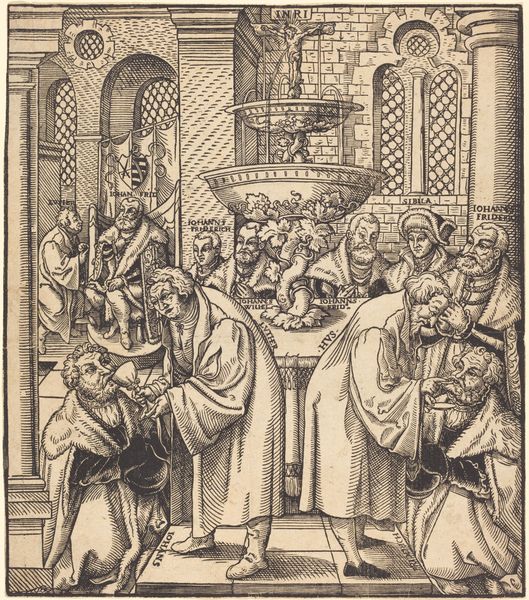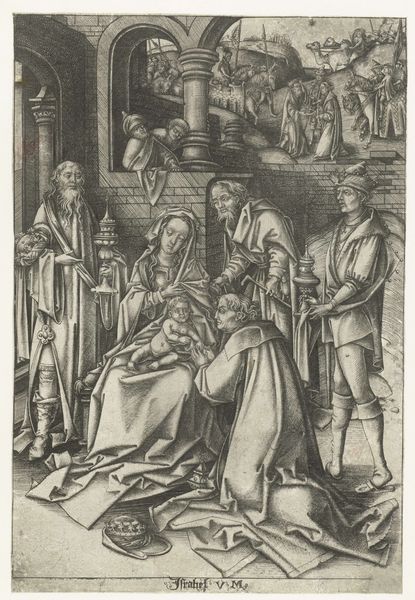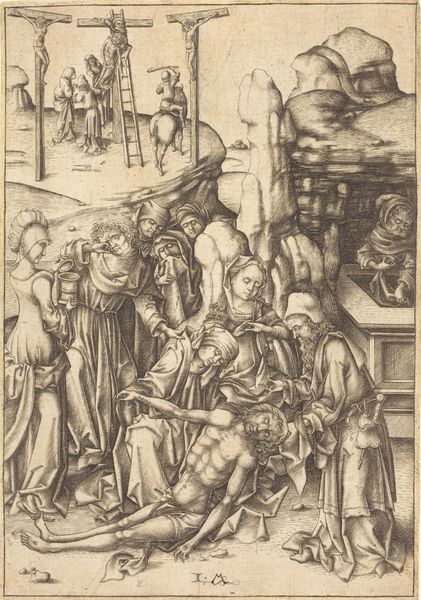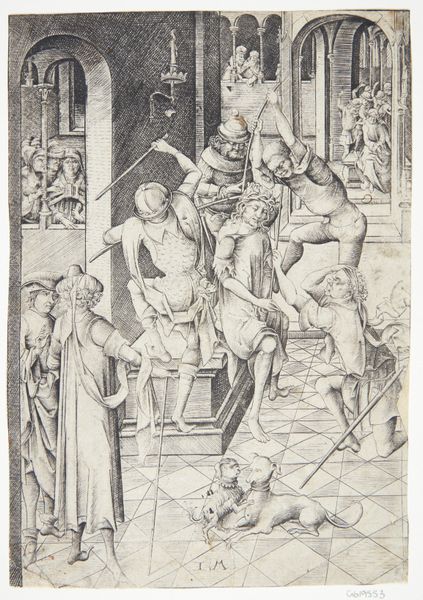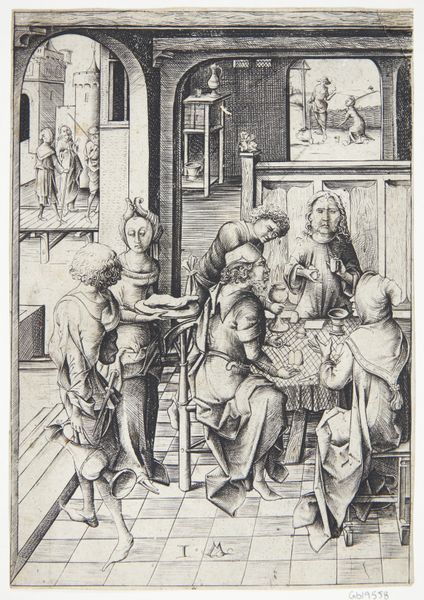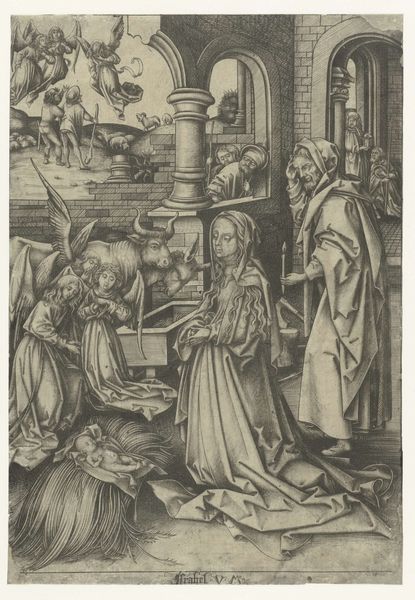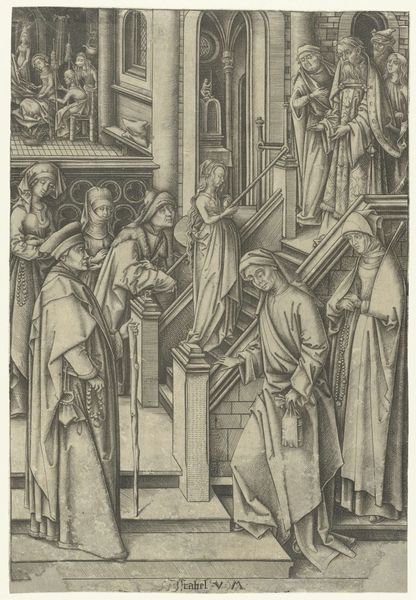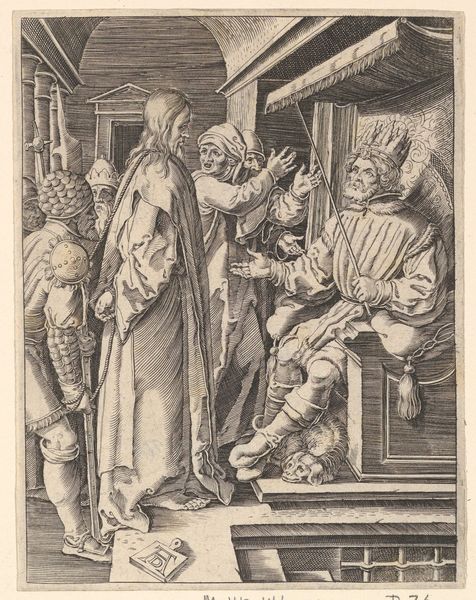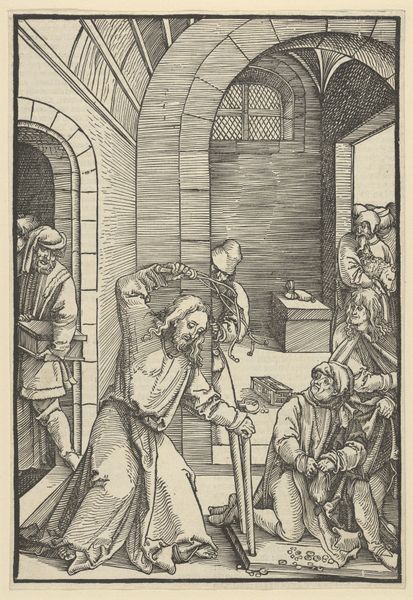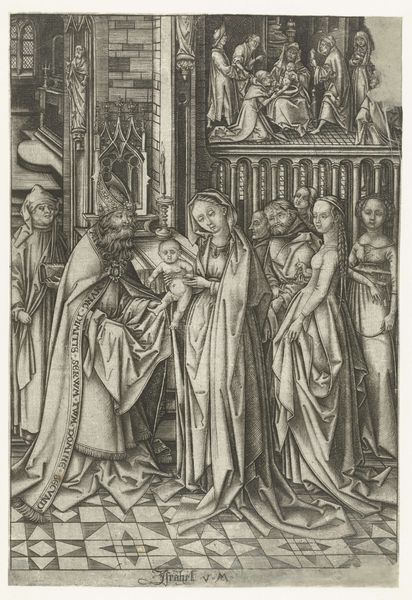
drawing, print, paper, engraving
#
drawing
#
medieval
#
pen drawing
# print
#
figuration
#
paper
#
history-painting
#
northern-renaissance
#
engraving
Dimensions: 260 × 181 mm (image); 267 × 181 mm (sheet trimmed within platemark)
Copyright: Public Domain
Curator: This intricate engraving, attributed to Israhel van Meckenem around 1481, is titled "Death of the Virgin" and held at The Art Institute of Chicago. The precision in rendering this emotionally charged scene is captivating. Editor: Captivating is one word, but overwhelming is another. So much detail crammed into one composition. It evokes a sense of claustrophobia, almost as if the grief is a palpable presence pressing in on all sides. Curator: That feeling, I think, arises from the densely packed figures, all witnesses to the Virgin's final moments. Look closely, and you will note how each mourner displays a distinct gesture of sorrow. Some hold prayer beads, others palms. Their heads droop with mourning as they lean in toward the Virgin. Editor: I'm struck by how active her death is depicted, it’s a social event, codified with specific gender roles that still speak volumes. Note the exclusion of women, positioned above as grieving watchers but not as participants within the actual ritual performance below. Their emotions become separate from the sanctioned performance by the male clergy, highlighting a disparity in the control and the narrativization of religious rites. Curator: Absolutely. But the image also emphasizes the importance of ritual and the transition from earthly to divine. Van Meckenem carefully embeds visual symbols that would resonate deeply with a 15th-century audience. For example, observe the candles representing the light of Christ. Editor: And let's also address the subtle hierarchy here. It positions religious figures, like the one with the bucket, directly as powerful intercessors between a dying woman and what she believes comes after. Look closely how death is actively done to her as a spectacle. Curator: You're right, there's a complexity in the intersection of faith, gender and the power structures. Editor: Indeed. Looking at it anew, this is a reflection of larger anxieties about gender roles in Medieval culture that persists to modern religious settings, demonstrating continuity over centuries. Curator: It is sobering how potent and enduring some of those visual dynamics still are. Thank you for unveiling those layers for us.
Comments
No comments
Be the first to comment and join the conversation on the ultimate creative platform.
